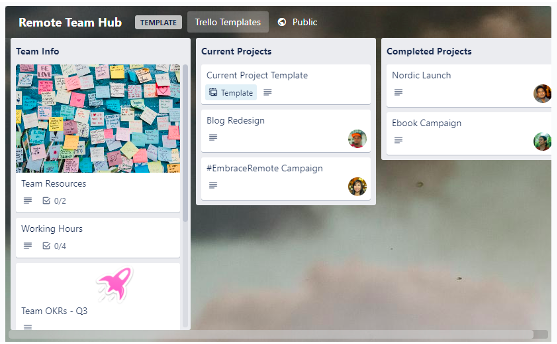What Are the Best Ways to Track Remote Employee Productivity?

Are you still getting used to a remote workforce? Many businesses in Orlando and around the country are still adjusting and getting the hang of working from separate locations.
The pandemic may have accelerated a work-from-home (WFH) model, but it looks like it’s a legacy that’s going to remain even once the pandemic is gone. The number of global workers that will be permanently remote is expected to double in 2021.
One of the biggest challenges with remote teams, is how to make sure they’re being productive. The question of how to track productivity for people not working at a central office location is one reason why there weren’t more remote workers before the pandemic happened.
Employers worry that if they give too much leeway, they’ll get taken advantage of. Employees may not work as hard and have other distractions at home.
The fact is that when done right and when companies have the right business technology, remote workers are actually shown to be more productive. Other benefits to companies include lower turnover and fewer sick/personal days taken.
Companies that allow employees to work remotely have a 25% lower turnover rate than those that don’t.
Thanks to a variety of digital tools, along with best practices for well-communicating teams, you can enjoy the advantages of a remote team and ensure they’re working as expected at the same time.
Here are several ways to do that.
Track Tasks Using the Card/Board Method
One of the most popular ways to keep track of tasks and projects is by using what’s known as the Kanban board. This uses a board (or page) with columns set up as stages.
Cards/tasks are moved through each stage, allowing everyone sharing the online space to see productivity in action.
 Image Credit: Trello
Image Credit: Trello
Additionally, task cards can include employee assignments, due dates, comments, and files. This allows all communication about a specific task to be easily accessed, rather than buried in an email inbox.
Microsoft Productivity Score
If your team uses Microsoft 365, you can use Productivity Score to view multiple metrics on best practices for productivity. The tool is also specifically designed to gauge how remote teams are adjusting to a new WFH environment.
You can access metrics on things like whether users are sending attachments via email or sharing cloud links, which is more productive.
Productivity Score offers eight different metrics, plus a special report that are all designed to track user productivity. These include:
- Communication
- Teamwork
- Meetings
- Content Collaboration
- Mobility
- Microsoft 365 Apps Health
- Network Connectivity
- Endpoint Analytics
- Special Report: Business Continuity
Track Hours Worked Per Task/Project
When you have an hourly employee, it can be more difficult to track their daily productivity. Do you just assume they’re working the same hours as they did at the office?
There’s a simple way to not only clock hourly work for your remote team but also track hours worked per task or project. This detail can be very helpful when you’re evaluating the value of a certain project or task.
For example, you may find out that personalizing each social post is taking much more time than you realized and decide to move to a more general post format to improve social marketing ROI, after seeing just how many hours are being spent.
There are many online hourly trackers employees can use to track hours worked by task. They simply click to start a timer and click to stop. Two of the most popular are Toggl and Clockify.
Use Morning “Touch Base” Meetings
Productivity can often suffer due to miscommunication. A remote employee may think they should be working on one thing, when their manager has a completely different priority in mind.
Using short (emphasis on “short”) touch base meetings in the morning that are roughly 10-15 minutes long at the most can help keep your team aligned to the same priorities and make everyone feel connected to their team at the same time.
The goal is to use these as a way to emphasize the mission for the day and allow employees to ask questions if they’re confused about a particular priority.
Create Clear WFH Policies
When you don’t have clear WFH policies, a newly remote employee may think it’s fine for them to work any hours they like as long as they get certain tasks done. You may need them to be available and working during certain business hours.
That confusion can lead to problems.
You can head off potential misunderstandings and productivity issues by creating clear WFH policies that your employees know they need to adhere to up front. Include things like what hours they are required to work, the tools they should use to communicate with their team and with those outside your organization, when to take breaks, lunch, and anything else they need to know.
Set Up A Productive Remote Ecosystem With Help from C Solutions
C Solutions can help your Orlando area business put the tools and workflows in place to power a productive remote team.
Schedule a free consultation today! Call 407-536-8381 or reach us online.
